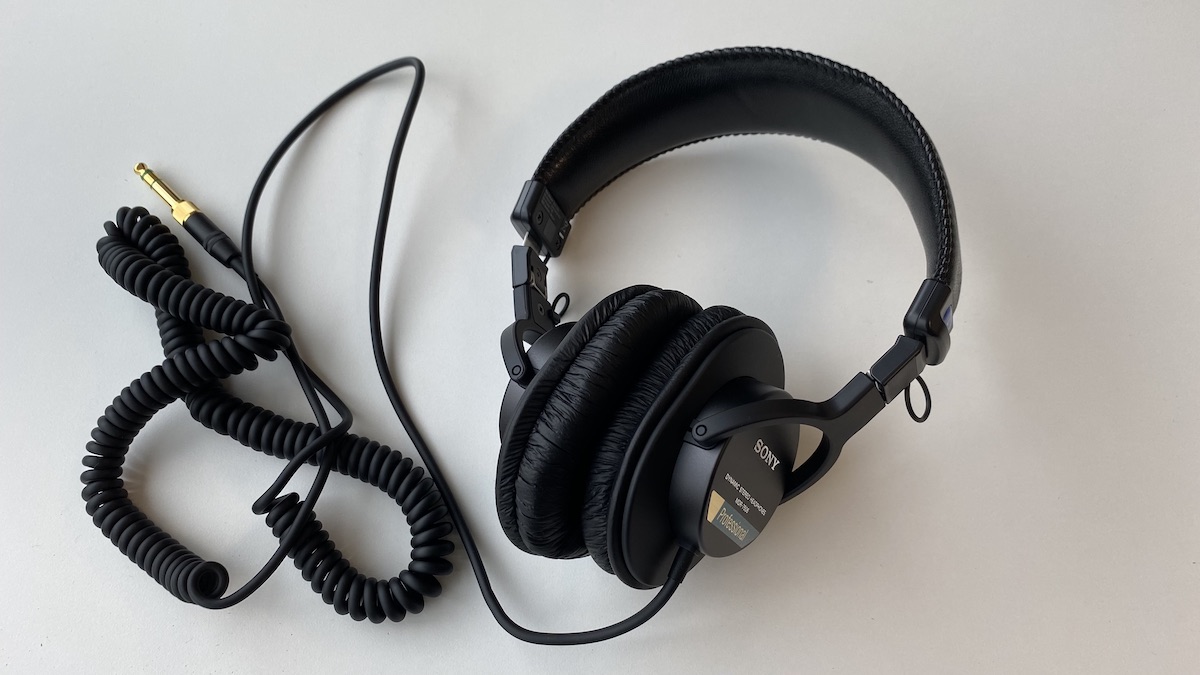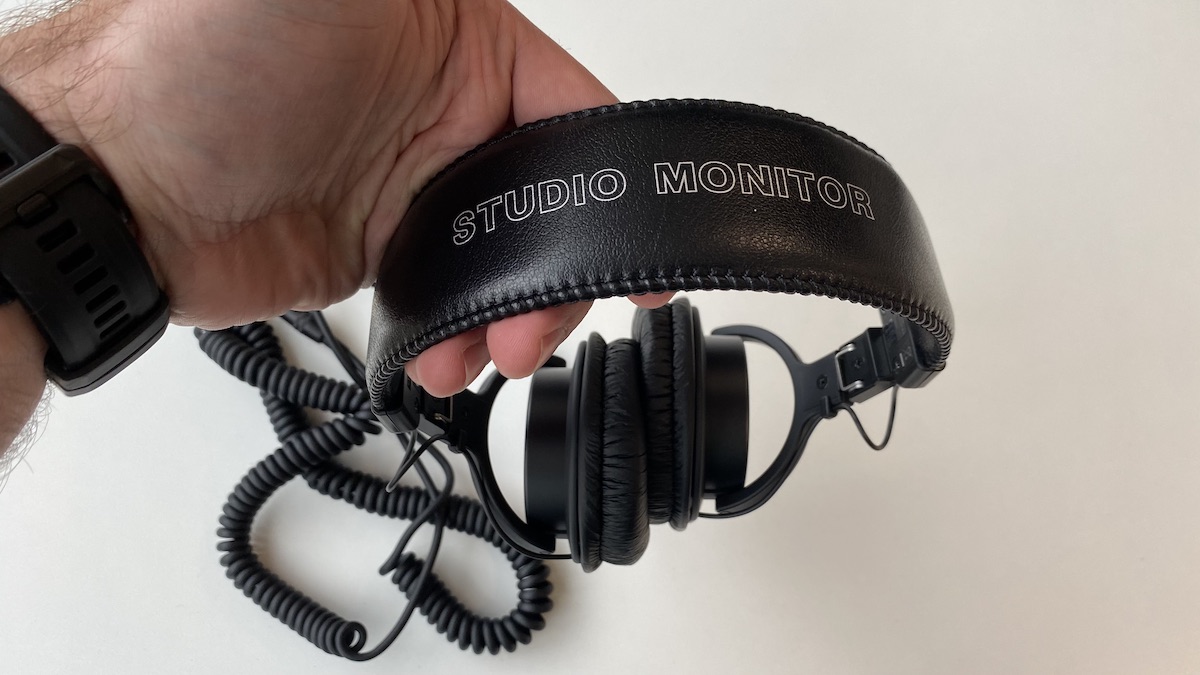MusicRadar Verdict
Sturdy, reliable and revealing, if your mix has issues, this veteran model still delivers the goods where it counts.
Pros
- +
Great pedigree
- +
Lightweight & comfortable
- +
Well-balanced, precise sound
Cons
- -
Leatherette feels a bit cheap
- -
Heavy cord can be overlong in some situations
MusicRadar's got your back
What is it?
Headphones are one of those products that have a number of different possible use cases. Some are designed primarily for travel or ideal for use while exercising, others specifically for audiophiles to listen to music on, while still others are meant for professional studio, broadcast and field recording work. The Sony MDR-7506 is aimed squarely at this third studio headphones category, and has been top of the bestseller list in some form or other since the 1990’s, and for good reason.
Foldable, durable, reliable and a reassuringly accurate frequency response across the spectrum are all factors in its longevity, but the competition has intensified a lot since these first dominated the field, so is this industry standard still worth buying in today’s congested and jostling market?
Just in case you were in any doubt as to the purpose of these headphones, the traditional silver “STUDIO MONITOR” legend is still emblazoned across the top of the headband. This, along with the clearly colour-coordinated blue and red “L/R” labels on the sides of the headband ensure that you’ll never put these on backwards by accident.
The running track-shaped ear cups are covered by wrinkly, paper-thin leatherette, and isolation from external noise is sufficient despite the rather lacklustre level of padding, although there are a number of sources online from which thicker pads can be ordered if required. Headband padding is equally comparatively thin, but the cans are light enough for this not to be a problem overall, with no discomfort experienced during prolonged use.
One slightly odd feature is the cable that exits each side of the headband and snakes down onto the outside of the ear cup before entering the earcup’s plastic side casing. When used on the smallest headband adjustment, this results in a weird loop of cable that sticks out from each side of the unit. This could be to aid replaceability in the case of a cable break, but we feel that this might look slicker and be better protected with an internal design such as that found on the Audio-Technica M50x.
- Best budget studio headphones: performance on a smaller budget
- The best closed-back headphones for music makers
Performance And Verdict






The MDR-7506’s are lightweight cans and, importantly, comfortable to wear for long periods. The metal extension sliders that allow for headband adjustment either side have useful graded scales so you can click them out to the right numbers for your head size each time you use them. The earcups can be folded up into the headband area simply by pushing upwards, making for easier transportation, although the lightweight plastics used in the construction of these cans made us a little wary of just chucking them into a backpack without the extra protection of the included soft pouch.
That said, in what appears to be a nod to their pro studio pedigree, the packaging comes with a slide-out card with a detailed exploded schematic of all the available replacement parts, so if you have the know-how, it looks as though pretty much all components, from the cable to the ear pads to the drivers themselves, are replaceable. This is a big bonus if you’re likely to be subjecting these cans to abuse by multiple ham-fisted artists and musicians as they tramp through your studio doors.
Want all the hottest music and gear news, reviews, deals, features and more, direct to your inbox? Sign up here.

Sennheiser HD280PRO
Audio-Technica ATH-M40x
The extended cable length of 3m is incredibly handy when in use around the studio, giving you a large degree of freedom to move about whilst tracking things like vocals, guitar and drums, although, like all such cables, it can be prone to tangling. The main disadvantage is the weight when coiled - if you unplug it from whatever it’s connected to, the weight of the cable will immediately try to throw the connector onto the floor, and continually having to bundle the cable up to transport these cans can prove a bit of a nuisance. However, if you compare that nuisance level to the kind of latency you may encounter while attempting to track with a pair of wireless Bluetooth headphones, this really becomes a minor inconvenience.
Aside from their durability and classic design, the main reason this model has been so successful in the pro arena for so long is in the way they sound.
If you’re expecting a flattering, low-end emphasising smiley curve response á la Beats, you’ll be disappointed. Rather than focussing on beefing up the low end, these cans emphasise detail in the high-mid range, revealing harshness that might otherwise go unnoticed. This makes them a great pick for producing, programming or mixing, as any blemishes that arise in the sound of what you’re working on will be remorselessly revealed. The relatively modest 63-ohm impedance means they can comfortably be driven by sources such as mobile phones or laptop outputs.
Listening to a selection of pre-recorded music confirmed the high-mid emphasis - previously unheard details were revealed in percussion, vocal and guitar tracks in our test material, while the levels of bass were tight, even and perfectly audible, yet noticeably unpronounced. So whilst we wouldn’t describe these as a particularly enjoyable listen, we couldn’t deny the amount of detail they were able to reproduce in the upper ranges. In this regard, we’d attest that they were more than fit for purpose.
Any blemishes that arise in the sound of what you’re working on will be remorselessly revealed
To sum up, the question of whether the MDR-7506’s fit the bill for your next pair of headphones depends solely on what you’re intending to use them for.
They might not be the best choice for enjoying music, but they’re exceptional for hearing what's wrong while you're producing it. For travelling, working out or everyday listening enjoyment, we’d be tempted to look elsewhere for something a little more flattering and forgiving, but if you’re a content producer looking for a great quality, inexpensive solution for tracking, programming and mixing, their neutral sound and accurate response could be exactly what you’re looking for. After all these years, it looks like the MDR-7506’s have still got it.
Hands-on demos
SoundGuys
SoundID References
Home Studio Basics
Specifications
- Type: Circum-aural, closed-back
- Driver type: 40mm dynamic
- Impedance: 63Ω
- Sensitivity: 106dB/mW
- Frequency Response: 10Hz - 20kHz
- Cord: 3m, coiled
- Weight: 230g (excluding cable)
- Contact: Sony
Dave has been making music with computers since 1988 and his engineering, programming and keyboard-playing has featured on recordings by artists including George Michael, Kylie and Gary Barlow. A music technology writer since 2007, he’s Computer Music’s long-serving songwriting and music theory columnist, iCreate magazine’s resident Logic Pro expert and a regular contributor to MusicRadar and Attack Magazine. He also lectures on synthesis at Leeds Conservatoire of Music and is the author of Avid Pro Tools Basics.

